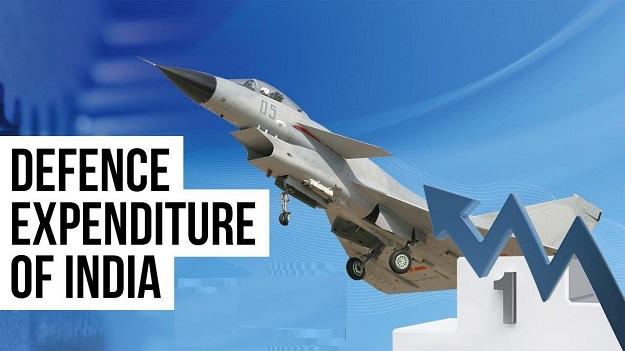-
- Several quarters, including the Parliamentary Standing Committee on Defence, have asked that expenditure on defence be increased to at least 3% of GDP — it is widely believed that this will address the problems of national security, and underline the government’s commitment towards the military.
- At 1.49%, India’s defence expenditure as percentage of GDP is stated to be at its lowest ever, lower than what it was prior to the disastrous 1962 war with China. But this figure of 1.49% — or Rs 2,79,305 crore — does not include defence pensions and MoD spending.
- If both are included, the total defence expenditure rises to Rs 4,04,364 crore, or 2.16% of GDP. Data for the past decade show this figure, too, has been falling — it was 2.78% in 2009-10.
- At Rs 4,04,364 crore, defence expenditure is currently 16.6% of the central government expenditure (CGE), and has been stable in the range of 16-18% over the past decade.
- But defence expenditure as a percentage of GDP has been falling because CGE as a percentage of GDP has come down from 16% to 13% over the past decade. This makes GDP a somewhat misleading metric for fixing defence expenditure.
-
- Raising the defence budget to 3% of GDP from the current 2.16% will mean an increased allocation of Rs 1,57,305 crore — from the current Rs 4,04,364 crore to Rs 5,61,669 crore, or 23% of CGE.
- The increase would have to be on the capital side of the defence budget, since salaries, pensions and other operating expenses have full fund allocation with little scope to absorb extra funds.
- The Defence Ministry’s capital expenditure of Rs 99,564 crore in 2018-19 is 33% of the government’s total capital expenditure of Rs 3,00,441 crore.
- Raising the defence capital expenditure by another Rs 1,57,305 crore to Rs 2,56,869 crore would increase this ratio to 85%.
- This would leave the government with very little money for capital spending, including for infrastructure and asset creation, outside of the procurement for the defence services.
-
- Moreover, as most defence equipment is procured from foreign countries, an increased capital budget would increase the defence import bill, and add to the current account deficit The existing allocation for defence for 2018-19 is 27% of the total tax revenue, which will shoot up to 38% if the allocation is raised to Rs 5,61,669 crore in order to meet the target of 3% of GDP.
- This will require either an increase in the current tax rates, or a widening of the tax base, both of which are difficult to achieve in the short term. It will thus not be feasible to substantially augment the government’s non-borrowing revenues and allocate 3% of GDP for defence.
- If revenue collection is not increased, defence expenditure can go up only if allocation to other heads is reduced. With 23.6% of CGE going towards interest payments, 17.5% allocated to states, there is very little for education, health, police and public infrastructure. India, which is struggling to improve its human capital, needs to, in fact, increase socio-economic expenditure manifold.
- A solution probably lies in fixing the current imbalance in the defence budget, where an increasingly large share of resources is going towards human resources costs, leaving very little for modernisation.
- With OROP and the new Pay Commission, defence pensions alone have risen from around 18% of defence spending in 2013-14 to 27% in 2018-19; at Rs 1,08,853 crore now, they compare unfavourably with total civilian pension of Rs 59,613 crore.
- Overall, between 2011-12 and 2018-19, the share of manpower costs — pay and allowances, and pensions — in the total defence expenditure has increased from 44% to 56%.
- This increase has largely come at the cost of capital procurement, which has gone down from 26% to 18% of defence expenditure. The challenge is to optimise the existing defence allocations, rather than seek a quantum jump in funds.

























 WhatsApp
WhatsApp